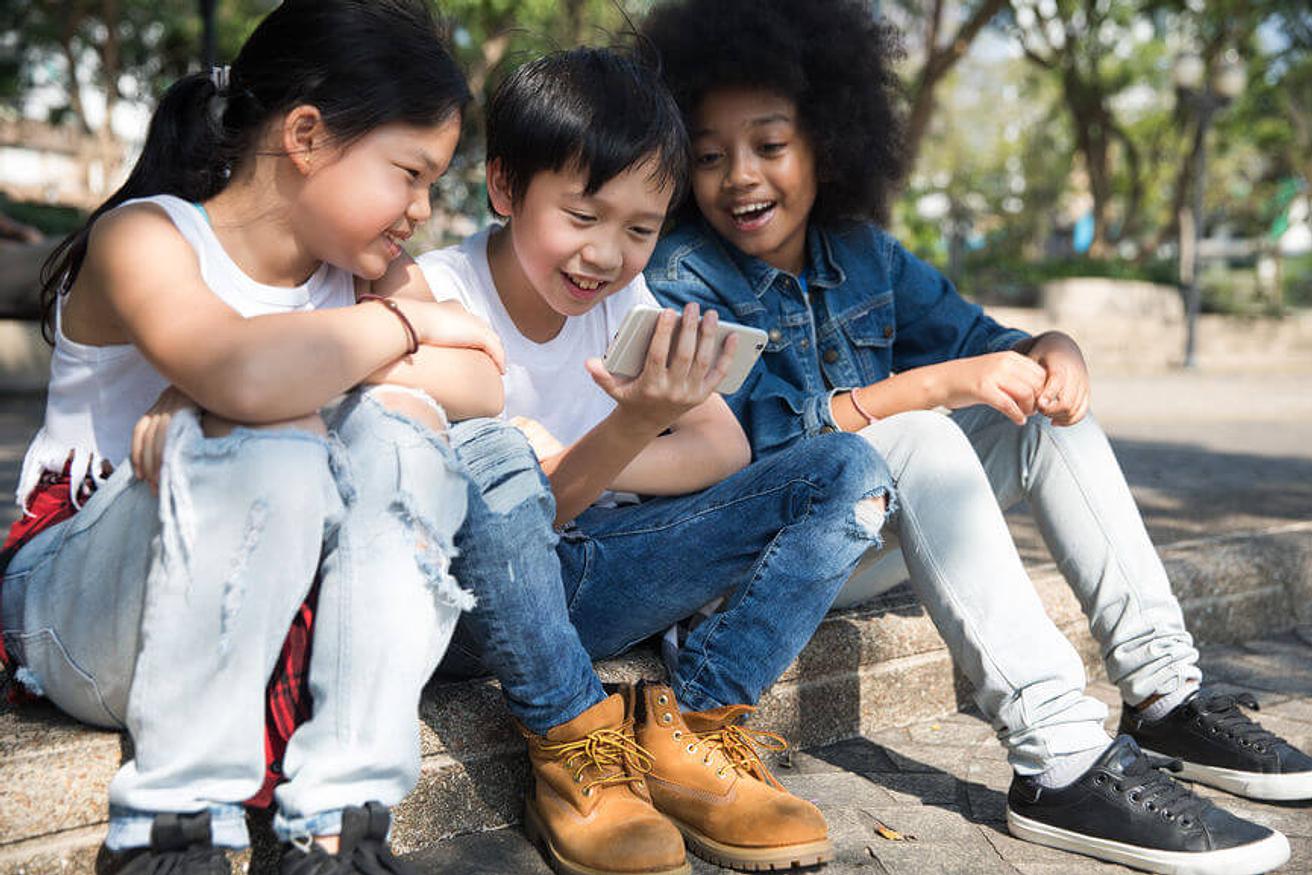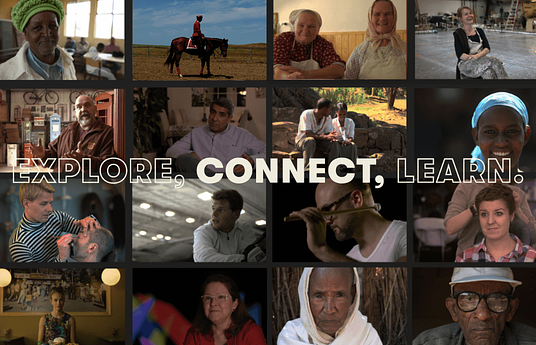As elementary social studies teacher educators, we aim to instill in preservice teachers the importance of understanding and embracing the many dimensions of human diversity, including how they impact teaching and learning. Nurturing in our students the values of identity, cultural awareness, empathy, and perspective-taking is also integral to the mission and conceptual framework of our Watson College of Education and the state of North Carolina Professional Teaching Standards where teachers are called to:
-
demonstrate knowledge of diverse cultures;
-
select materials and develop lessons that counteract stereotypes and incorporate contributions;
-
recognize the influences on a child’s development, personality, and performance; and
-
consider and incorporate different points of view.
HundrED innovations afford numerous engaging resources and pedagogical approaches for fostering such knowledge, skills, and attitudes in our teachers as we prepare them (and their future students) for multicultural classrooms and a globalized world. Last year, we were the first to pilot Lyfta in US classrooms where our students complete field experience. Watch this video showing our efforts to foster global competence in teachers. In this blog post, we will highlight three new (to us) favorites: GiveThx, Global Oneness Project, and the Who Am I? App by Interactive Diversity Solutions.
GiveThx
Modeling how to establish positive classroom environments and relationships with students is foundational to curriculum planning and instruction. GiveThx, a digital curriculum, and app afford a structured way for teachers and students to give and receive messages of gratitude (“Thx notes”) and to reflect on their own identity development and learning as global citizens.
While designed for classroom use, the benefits of GiveThx are evident in higher education as well. Michael Fauteux, a former secondary mathematics teacher and co-founder of GiveThx, explains that “teachers can take these practices and use them to build healthy behaviors, relationships, and self-esteem in their own classrooms after practicing them as a staff together.” In our teacher preparation program, we use GiveThx as a tool for demonstrating how structured individual and group gratitude exercises can foster self- and social-awareness, as well as critical reflection on strengths and areas for growth. Students learn how peer-to-peer Thx notes can develop and reinforce prosocial behaviors, digital interactions that may spark in-person conversations, building stronger relationships amongst students and creating a more welcoming school culture and climate. Importantly, GiveThx also promotes safe, equitable access for students otherwise shy or hesitant (such as language learners and young men) to express emotions publicly, a key value we wish to promote as teacher educators.

Following the GiveThx curriculum, students first learn about the science of gratitude and how it underpins social-emotional competence. Connected to mindfulness practice, giving and expressing gratitude to others has been found to increase happiness and resilience; strengthen relationships; foster positive identity development; and reduce stress and anxiety. Such outcomes are foundational to creating a positive classroom climate, including respect for diverse perspectives.
Throughout the semester, we use GiveThx in place of traditional “quickwrites” or journal entries, affording a digital record of students’ reflections and gratitude messages. For example, a recent course session focused on human rights for which the Lyfta Awra Amba storyworld served as a context for exploring the power of education. Prior to the lesson, students reflected on the value of education. What would one miss if not afforded the opportunity to go to school? In her GiveThx account, one student wrote:
I think that people who are not allowed to go to school would miss out on connections with other people. They would miss out on the experience of other people, places and cultures. They would miss out on great opportunities to learn about new topics and ideas. I think children would also miss out on the opportunity to share their own thoughts, gain confidence in themselves and show their potential to the world.
Another student wrote: I believe the most important aspect that someone would miss out on is the value of human connections and relationships. By analyzing responses, we immediately gleaned a theme amongst students: the importance of human relationships in learning.
In addition to using prompts related to the course focus, students routinely send and receive gratitude messages to peers. They offer one another encouragement as future teachers (“ Just wanted to say how grateful I am for your friendship and for all of your help during our unit lesson planning stage. :)”) as well as simple messages of kindness (“Thank you for the chocolate and laughter! XOXOXO”). Such notes foster a sense of camaraderie and support in a cohort of preservice teachers as they progress through the teacher preparation program.
During our semester-long pilot of GiveThx, we have found that teacher-facilitated gratitude practice can foster a sense of agency, empathy, and interpersonal skills needed to be compassionate, effective educators, and require only a few minutes per class.
Global Oneness Project
As Chimamanda Adichie underscores in her TED Talk "The Danger of a Single Story," we believe it is essential to include a variety of “stories” in the curriculum to counter stereotyping and to promote perspective consciousness and understanding. Multicultural literature is a powerful resource that affords the ability to teach children about diverse cultures and perspectives in the world. Literature also provides insight into global issues and ways one can devise solutions to improve in one’s community and the world, a key component of our teaching philosophy.

In addition to literature, we believe that film and photography are powerful media through which to engage students as they learn about issues of local and global relevance and our shared humanity. Due to its robust library of media (and accompanying lesson plans) highlighting diverse cultures, regions, and themes, The Global Oneness Project is a favorite resource across our courses.
For example, to prepare teachers to support the growing number of immigrant families in our school system, one course activity focused on the DREAM Act. In the social studies methods course, students learn about history labs, an inquiry-based teaching strategy that involves a teacher-generated compelling question and related primary and secondary sources that students examine and use to develop an evidence-based answer. This strategy can be used to examine not only historic events and figures but also contemporary issues such as the DREAM Act. We used the Global Oneness Project’s film “Making it in America” as the main source for a history lab that focused on this proposed legislation.
Students were moved by the film which tells the story of a single mother who left violence in Mexico to make a better life for her family in the United States. When asked to identify something in the film that really spoke to them, students gave responses such as:
The part that stuck out to me the most was when she said:
This really showed me how much she wants her children to succeed and how she is working hard to make sure they have a better chance in life. She wants her children to have a higher-paying job and have a life they are proud of.
Hearing the mother in the film discuss her hopes and dreams for her children was a meaningful experience for this group of future teachers. Language differences and long working hours can be a barrier to communication between teachers and immigrant parents; schools sometimes perceive a lack of communication from home as apathy. Recognizing that the parents of the students in their classrooms likely have the very same hopes and dreams as the mother in the film fostered an empathic understanding of the immigrant experience.
Who Am I? App (Makers of Don’t Guess My Race)
Throughout our courses, we examine a variety of social issues with our students including race. Many of our students have communicated that they do not feel comfortable discussing race issues with one another or with K-5 students in their school field placements. As we searched for resources to help them facilitate such discussions, we first explored Interactive Diversity Solutions’ (Don’t) Guess My Race program. This organization has also developed an app called Who Am I? for younger students to explore the various ways that individuals self-identify in terms of ethnicity, national origin, religion, gender, sexuality, and culture. Originally developed for a parent and child to use together, the app instructs partners to view a grid with 15 headshots while the “chooser” selects an individual for the other partner to guess by asking questions about their appearance. Once the “guesser” selects the correct individual, a text box pops us with a quote from the individual on how they self-identify.
Students gained a great deal from this experience, expressing thoughts such as “I found myself excited to hear about each person's individual story“ and “I found this educational game a great tool for bringing awareness to diversity as it was incredibly engaging and creative.” We also found this to be a useful resource in achieving our goal of increasing comfort level in talking about race as one student stated:

As a class, we strayed away from talking about race at first, but this app helped normalize the race discussion. The game aspect acted as a catalyst for those conversations for us to have with our entire class. As student teachers, this app was especially relevant to us as we begin to lead students to become more culturally aware people. Using the app also encouraged students to get to know students and their families and understand the ways in which they self-identify thus leading to more culturally relevant teaching practices. Students also found the app’s “tips” about social justice awareness to be pertinent to the K-5 classroom.
***************************************************************************
In short, the HundrED innovations we have highlighted engage students cognitively and emotionally, sparking curiosity, compassion, and exploration into cultural, social, and environmental issues. Hearing the perspective of an immigrant mother from Mexico in the Global Oneness Project film was a particularly powerful and empathy-evoking experience. The Who Am I? App exposed students to the complexities and importance of self-identification thus increasing cultural awareness and understanding. Building a positive, welcoming climate using GiveThx enhanced our classroom conversations by creating a safe space for sharing beliefs and worries as future teachers, including how to engage and connect with diverse children and their families. We look forward to implementing more HundrED innovations in our work as teacher educators.


